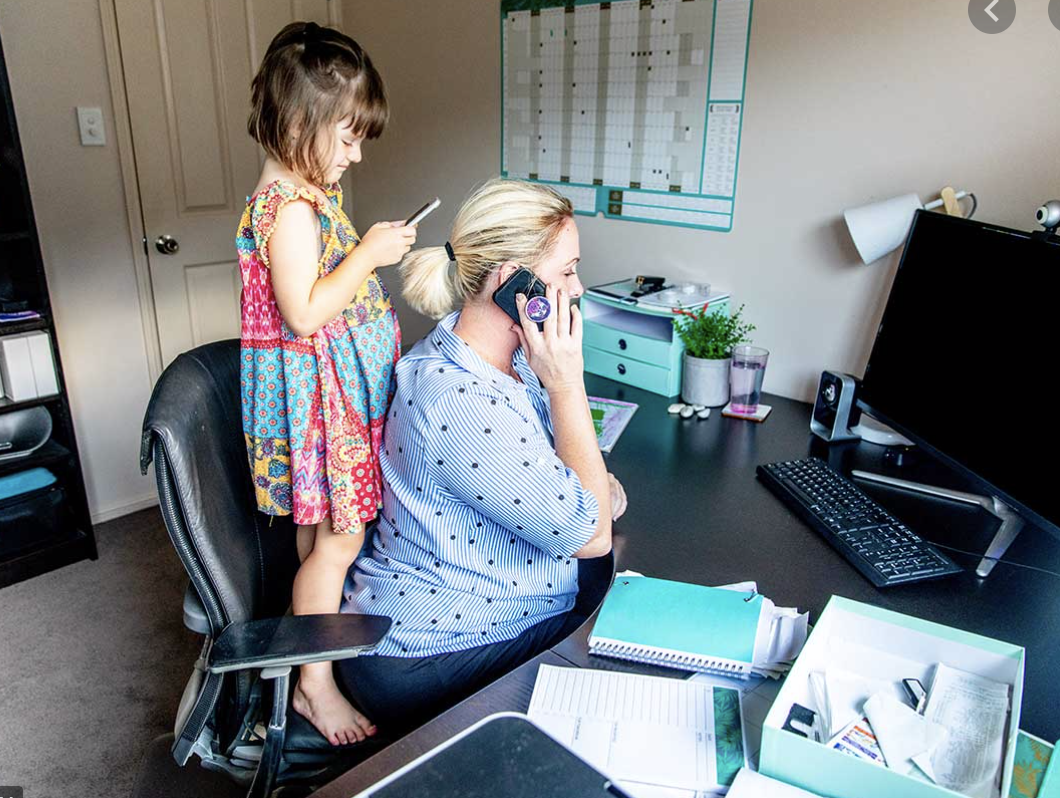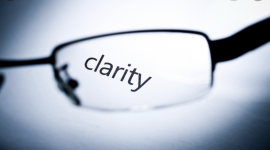05 Jun
2020
Working From Home, Now, and After the COVID-19 Crisis: The Good, the Bad, and the Ugly
One trend that is likely to last for a while after the current pandemic crisis has receded is working from home. When nations across the globe went into lockdown in March, hundreds of thousands of employees found themselves suddenly expected to work from home as their workplaces closed down. Now it seems many of them – having tasted the freedom and advantages of telecommuting – have little desire to return to the workplace. Productivity – to the surprise of some employers – tends to improve when employees work from home and morale is often improved also. Add in the benefits to the environment of reduced commuting, and the ease with which offices can ensure social distancing with 50% or less of their original employees now based there, and you have a win-win situation. Is this the way forward as we adjust to our “new normal?” That depends…
The Good
Given a global health crisis that would presage a global economic recession of almost unprecedented severity, being given the opportunity to work from home must have been a huge relief to employees who otherwise would have been furloughed or even laid off. Safe at home, salaries ensured, theirs was a position to be envied. All the advantages of working from home were likely much appreciated: no crowded commuter trains or bumper-to-bumper traffic to contend with, and no requirement for office wear; in fact, one could work in one’s pyjamas if one so desired! All these things are indeed highly desirable to many of us. Without interruptions from chatty colleagues, we get more done in a shorter time. Being able to arrange our own work schedule, aside from occasional conference calls and Zoom meetings, gives people the freedom to run essential errands during the workday (although now, of course, there are still actually no errands to run.) Nonetheless, as the weather got warmer, our work-from-home brigade could choose to take a prolonged lunch break and catch some rays in the back garden, or take their prescribed hour of daily exercise in the middle of the morning, rather than trying to squeeze in a jog, cycle, or (virtual) yoga class between finishing work and making dinner. So far, so good!

The Bad
Unfortunately, it wasn’t all a bed of roses. For those with young children, suddenly their children were at home all day, requiring not only supervision and entertainment, but also home schooling. With the childcare falling disproportionately on female employees, it didn’t take long for reality to bite. Many women (I’ve no doubt some men also, but most accounts concede that it was more likely to be the women), found this incredibly stressful and exhausting. The above-mentioned ideal of working from home during normal times, when your children are safely occupied at school, falls apart rapidly when said offspring are fighting for use of their parents’ computers to do their school assignments, needing constant help/encouragement with the school work, requiring frequent snacks, fighting with their siblings, etc. Stories abound of parents getting their own work done in the late evening/early hours of the morning having, spent the entire day as babysitters and untrained educators – hardly the work-from-home idyll that sounded so promising before the crisis.
The vision: The reality:

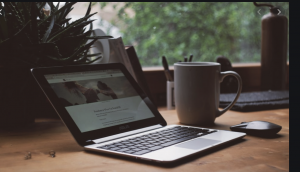
Being single or childless didn’t automatically make things that easy, either. Young people living with roommates who might – or might not – be working from home themselves, but were definitely always around; people ‘stuck’ in cramped apartments with no outdoor space and absolutely no designated office area, trying to attend virtual meetings from their bedroom; those with spotty internet service; and last, but by no means least, those extroverts who desperately missed the camaraderie of the workplace and found themselves going stir crazy; were likely not huge fans of this new arrangement either. Perfect, perhaps, for people with no school-age children, living in comfortable homes with space for a designated home office, pleasant backyards, plus perhaps a nearby park for jogging, walking, or cycling during breaks – these people were indeed in a good place. Others? Maybe not so much.
From an employer’s point of view, issues with people using their own home internet – of varying reliability – and fears of cyber security became considerable concerns. ‘Dropped’ conference calls and Zoom meetings with people who were still finding out how to use the app – muting and unmuting inappropriately – did not make for efficient meetings. And that was apart from the virtual meetings interrupted by errant children, noisy pets, or even a frustrated spouse or roommate!
The Ugly
For me, one of the most entertaining things of this lockdown/quarantine period has been glimpsing the backgrounds of TV presenters and panelists broadcasting from their homes. Bookshelves are de rigeur it seems – though some of the titles might not bear close inspection. Others choose artwork.
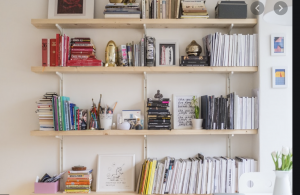
I don’t for one minute believe that these backgrounds were not carefully thought about and constructed; one of the benefits of Zoom is that it gives a choice of fake backgrounds, if the real one isn’t appropriate. Well-curated bookshelves with tasteful ornaments and serious-looking tomes are one thing; no one needs to see your unmade bed, dog hair-covered couch, or your messy kitchen table. You can upload your own background or use one from Zoom’s extensive library; everything from tropical beaches and pristine mountain lakes to rooms that seem to have stepped directly from the pages of a home design magazine.
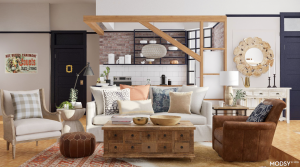

Honest fantasy… …or fake reality?
Then there’s personal appearance. Most people are quite happy to lapse into comfy at-home gear but changes need to be made before video conferencing starts. Then there’s our hair! As I write, in some countries and some regions, hair salons are re-opening – but not for a while yet in this writer’s province – nor in many others. While men may simply be sporting a retro, 70s look, many women now have roots a couple of inches long and really would rather their colleagues did not know they were not natural blondes, or – worse – that they were, in fact, grey!
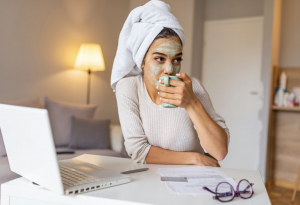
The Consensus
If anything, I’m a little surprised that the percentage of people wishing to continue working from home is as high as it is – up to 80%, if polls are to be believed. Working from home is arguably perfect for introverted professionals that live in pleasant, quiet neighbourhoods; have a comfortable, private home office, set up with reliable telecommunications; and either no children, grown children, or at least high-school age children. It might also work well for those with younger children – once schools are re-opened at full capacity. However, extroverts that thrive on the buzz and companionship of a busy office, and those with less-than-ideal home office setups, may be keener to return to a physical workplace.
Those of us who worked from home-based offices before this crisis started off ahead of the game. We already had our home office and our daily routines in place but, even then, the sudden absence of childcare could derail the hitherto productive workdays of many work-from-home parents.
Going Forward
As enterprises fall over themselves to set up health and safety protocols to keep their employees – and their visiting clients – safe in the workplace, it will quickly have become apparent that reducing the number of workers in the building would facilitate social distancing and make life far easier. For most, virtual meetings are now well established and employers can, and should, give serious consideration to instituting flexitime, as staggered arrivals and departures help workers avoid the health risks of crowded transit. The environment has benefited hugely from the reduction in emissions over a few months; clearly this is not sustainable in the long term but now is an excellent time for employers to institute practices that are more environmentally friendly, as well as caring for the physical and mental health of their employees. Encouraging some employees to continue working from home would be a major contributor to the ongoing fight against climate change. We don’t want to return to ‘normal’ – we want to return to ‘better.’
In closing, I want to emphasize that we are not lacking in empathy when we look for – even rejoice in – a silver lining to this horrific event. Our hearts go out to those who have suffered – those who have lost loved ones – in horrifying circumstances; lost livelihoods and businesses; made huge sacrifices; and struggled heroically on the front lines to protect, feed, and care for us all. This has been devastating for many and we never fail to appreciate that. We are not all in the same boat, not remotely, but we are all on the same stormy sea together. We will assuredly reach calmer waters – one day soon… Please stay safe and well.

